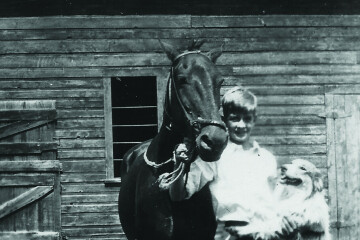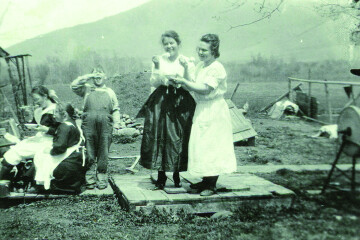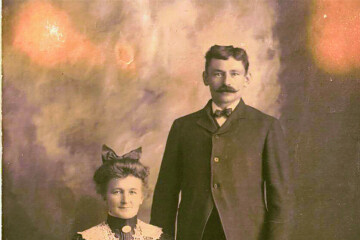What’s in a Name? Examining MSU Building Namesakes
When traversing the MSU campus today, one passes by dozens of unique buildings from various eras. The names emblazoned on signs outside of most of these structures honor people who contributed in a variety of ways to the creation or growth of the university. While it is impossible to mention them all, here are a few examples of some of the extraordinary folks memorialized on campus.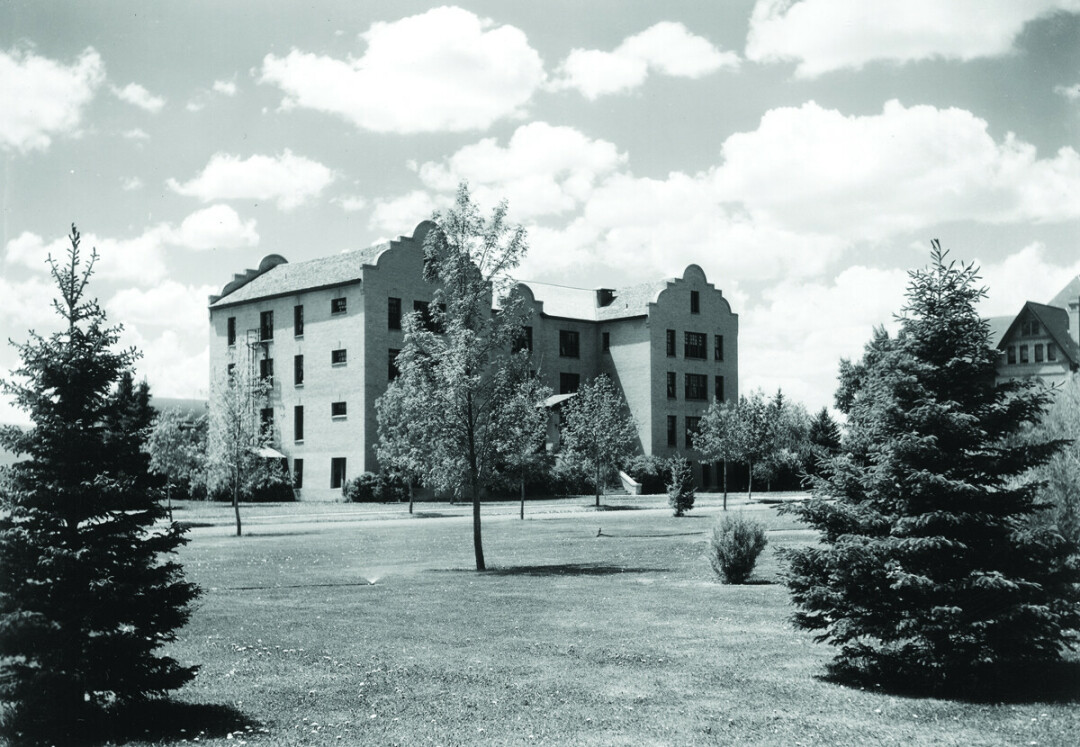
Hamilton Hall, Montana State College, circa 1930s. Photo: B.H. Alexander
Hamilton Hall, designed by local architect Fred Willson and constructed in 1910, was named for Emma Hamilton – College President James Hamilton’s first wife. Emma Shideler was born in 1863 in Indiana. Following their marriage in 1888, Emma and James Hamilton lived in Missoula for about fifteen years, where James pursued a career in education. In 1904, the couple moved to Bozeman upon James’ appointment as President of Montana State College. Though she only lived in Bozeman for five years before her death, Emma endeared herself to locals. According to an August 17, 1909, Republican Courier report of her passing, “Mrs. Hamilton acquired, in this brief time, a large circle of loyal friends, and in spite of ill health she carried well the social duties that fall to the wife of a college president, and in the college life she was a prominent and favorite figure. Her life was an example of cheerfulness and courage to all who knew her well...” Hamilton Hall was formally dedicated in June 1911.
Other women represented in campus building names include Anna Pearl Sherrick, Gertrude Roskie and Marga Hosaeus. Sherrick Hall, home of the College of Nursing, was completed in 1972. Dr. Anna Pearl Sherrick helped create the collegiate nursing program at Montana State College in 1937 and served as the first director until 1965. Sherrick retired from teaching five years later, but in 1976 she and two co-authors published a book on the history of nursing at MSU – The Montana State University School of Nursing: A Story of Professional Development. Upon Sherrick Hall’s dedication in 1972, the cornerstone was engraved with the words: “Dedicated to a nurse who saw no barriers to progress.”
Gertrude Roskie, namesake of Roskie Hall, began her career at Montana State College in 1944. Roskie grew up in South Dakota and received her education at South Dakota State, Colorado State, and Stanford University. At Montana State College, Roskie taught home economics and was appointed Dean of the Professional Schools in 1964, a position she held until her unexpected death a year later. In August 1965, Dr. Roskie and her niece were in a car accident north of Dutton, Montana. Roskie was killed in the collision and was buried at Sunset Hills Cemetery in Bozeman.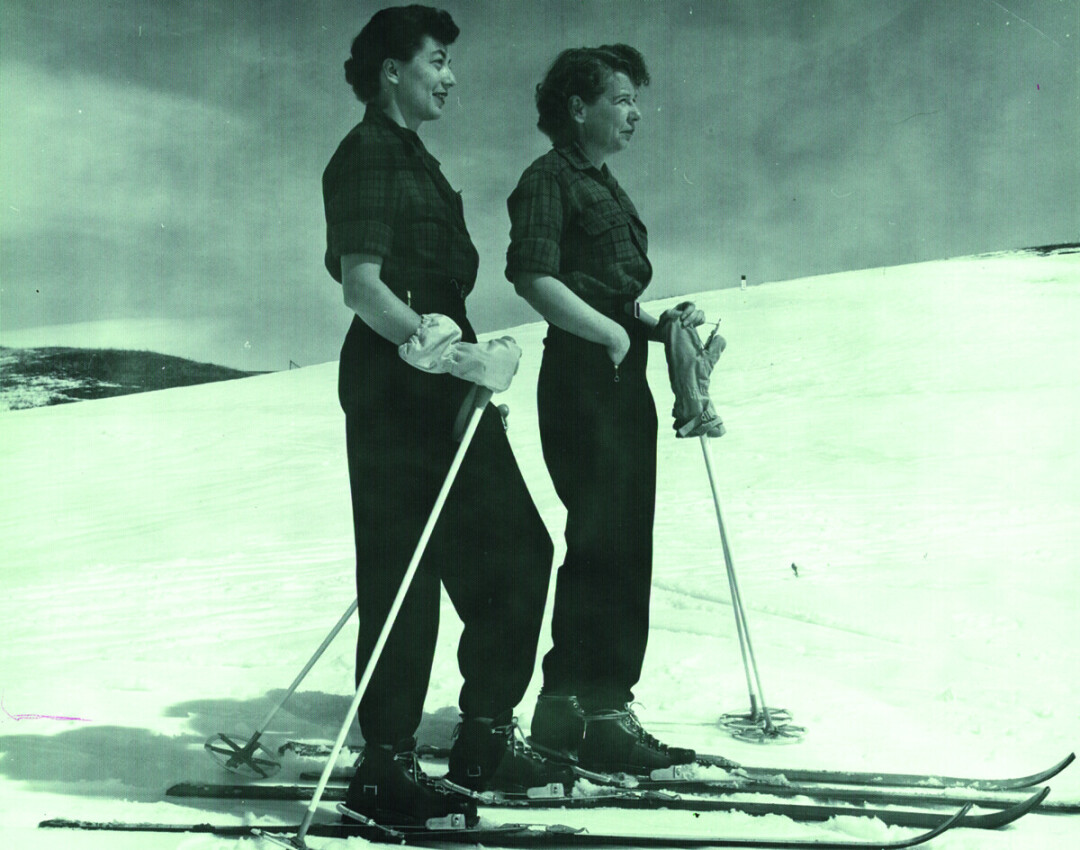
Marga Hosaeus and Gertrude Roskie on skis, circa late 1940
Born in San Francisco in 1918, Marga Hosaeus spent most of her childhood in Germany. She attended graduate school in Illinois and in the mid-1940s became the head of the Women’s Health and Physical Education Department at Montana State College. After the men’s and women’s physical education departments merged, Hosaeus continued teaching at Montana State as a professor until her retirement in 1979. In 1984, a new physical education building was christened the Marga Hosaeus Health, Physical Education and Recreation Complex.
Not surprisingly, several of the buildings on campus were named for college presidents. Since the establishment of Montana College of Agriculture and Mechanic Arts in 1893, there have been twelve presidents of the university. The first president of Montana State was Augustus M. Ryon. His initial task was building a functioning agricultural experiment station for the land grant school. This involved the construction of what is now known as Taylor Hall, the oldest existing building on campus. As an experienced engineering instructor, Ryon also planted the seeds of the top-notch engineering program that students enjoy today. Ryon Laboratory was constructed in the early 1920s on the southeast side of campus. In 1997, a new structure replaced the old Ryon Lab building. Today this building is called Barnard Hall.
Ryon’s small brick Agricultural Experiment Station building, located on what is now South Eleventh Avenue and called Taylor Hall, was built in 1894. According to the book In The People’s Interest: A Centennial History of Montana State University, through the years the brick structure housed the biology department, shops, classrooms, the Cooperative Extension Service, and even living quarters for agricultural experiment station personnel. In 1983, the structure was officially named Taylor Hall in honor of John Charles Taylor. Born in Utica, Montana in 1887, Taylor studied agronomy at Montana State College in the late 1900s and early 1910s. He played on the football team, served as the president of the Associated Students, and was active on the livestock judging team and in multiple honor societies. After graduation, he worked as a county extension agent in Eastern Montana before being appointed director of the extension service at MSC. Taylor served for twenty years before retiring in the late 1940s. Widely respected, Taylor’s 1964 obituary summarizes his admirable career: “Perhaps no one in the state ever helped as many young agricultural graduates get started in their work as county agents and other similar jobs. He was extremely well liked by the various boards of county commissioners with whom he had to deal in getting county agent work started; he was firm in his friendships and always willing to spend his time and effort in helping friends.” Cy Gatton circa 1910
Cy Gatton circa 1910
Not every campus building name comes from an instructor or an administrator. The former Gatton Field was named in honor of a student. There were at least two different prior locations of Gatton Field on campus, although the most well-known was the football field just south of the College Gymnasium (today’s Romney Gym), used from about 1930 until 1972. During his childhood in Bozeman and four years at Gallatin County High School, multi-sport star Cyrus Gatton competed in football, basketball, and track. He played fullback on the Bobcat football team, where he impressed peers and instructors with his athletic talent as well as his positive, sportsman-like attitude. With the outbreak of World War I, Gatton entered pilot training and served overseas. He flew bombing missions over Europe and received awards and commendations for his bravery and air combat skills. Just days before the war ended in November 1918, Gatton’s plane was shot down over France during a skirmish with a German squadron. Gatton was reported missing in action, but his grave was eventually located in 1919. In a formal ceremony on October 5, 1930, the athletic field at Montana State College was christened Gatton Field in his honor.
The Fieldhouse, completed in 1957 and arguably one of the most unique and impressive buildings on campus, was renamed in 1980 for another stand-out student athlete-turned-coach. The Brick Breeden Fieldhouse was christened in honor of John “Brick” Breeden. Breeden excelled at football and basketball at Gallatin County High School, and became a star athlete at Montana State College in the late 1920s. The tall, redheaded Breeden likely received his nickname either due to his hair color or his blocking abilities on the basketball court. A member of the famous “Golden Bobcats” basketball team, Breeden’s solid defense helped lead his team to a national championship in 1929. After college, Breeden’s diverse athletic talents transformed him into a versatile and talented coach of multiple sports. Breeden retired in 1971 after serving seventeen years as head coach of Montana State’s basketball team, and two years as athletic director.
Montana State University history is spelled out in the names etched into signs marking its historic architecture. As the school continues to grow and more buildings are added, who will be honored next?

